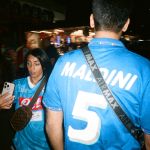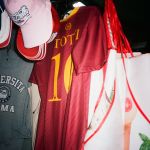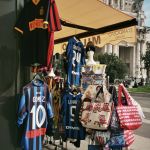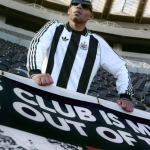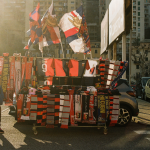
The problem of fakes in Italian football
Further confirmation comes from the case of Larry Nance Jr and the Venezia jersey
February 10th, 2023
In the last few days, the photo of New Orleans Pelicans wing Larry Nance Jr. wearing last season's Venezia jersey during the walk from the stadium entrance to the locker room has gone around the world. A jersey, like this year's, that has conquered everyone, fans and simple enthusiasts alike, even reaching NBA players, forcing Kappa to continually restock. So far so normal, the jerseys of the Italian championship are experiencing a new golden phase, thanks to the publicity offered by Kim Kardashian, caught out and about in a Roma jersey, and Drake in a Napoli jersey. This is not the first time that a player from the famous American basketball league has decided to show up in the tunnels wearing an Italian club's jersey, since last year Boston Celtics basketball player Aaron Nesmith wore a Roma jersey before game 2 of the NBA playoffs against the Milwaukee Bucks. In short, as one of the most followed trends on TikTok, the blokecore, reminds us, it is now socially accepted to carry one's obsession with football jerseys between office desks, city streets and generally outside a stadium.
Venezia kits >>>> https://t.co/oJ1HwiYgo2
— Larry Nance Jr (@Larrydn22) February 6, 2023
The problem, however, remains the same. As in fashion, in football too there are a lot of fake products circulating that pollute and clog up the market, inflicting a painful loss on the whole system. Further confirmation came from the photo posted by the Pelicans player where Venezia's Chief Brand Officer, Ted Philipakos, states that in all likelihood the jersey is not original, but rather a fake. Now leaving aside the Venezia case, it is now well known how the market is drugged by unofficial products. In fact, dozens of seizures by the authorities of products of all kinds are reported every month: from jerseys to scarves to lighters.
This is obviously not something new, anyone who has frequented Italian stadiums at least once and taken a tour of the surrounding areas knows very well that you can find various stalls around where you can find identical reproductions of the game jerseys, with the only differences being the fabrics and obviously the lack of the technical sponsor. These stalls, however, are not limited to the sale of jerseys, but it is often possible to find every possible gadget of the home team, from scarves made especially for the match to shorts or even jerseys of other teams or the national team. This practice is widespread in every stadium and is now tolerated by the authorities who man the stadium at every match according to the current directives of the police headquarters. Even the teams cannot claim to prohibit the presence of these stands, which is regulated in most cases by the municipality of each city, which allocates spaces to each vendor, even though there are often those among them who occupy a portion of the public ground in an entirely unauthorised manner.
Legally, a team today has several resources at its disposal to protect itself. The Court of Cassation has already confirmed for some time that football team logos are protectable, and those who counterfeit them are liable to prosecution even in cases where the counterfeiting is not such as to mislead the purchaser. But in such cases, there is no deception of any kind; those who market such shirts are perfectly aware that they are marketing a fake by exploiting the image, logo and brand identity of the club for their own personal gain. The production of fakes is not tolerated in any way, in fact even the name of the football team, even when it coincides with the geographical name of the city to which it belongs (e.g. 'Turin' or 'Rome'), is registrable and cannot be reproduced under any circumstances, so the field is getting narrower and narrower.
The same ruling of the Court of Cassation, which has in fact opened a huge precedent, has given the club great possibilities to avail itself and defend its image, such as that of being able to also fine the purchaser of such products. Also irrelevant, as the judges pointed out, is the wording 'not conforming to the original', which in no way saves seller or buyer in any possible case. As in the case of the Venezia jersey, however, 'fake' jerseys may not be distinguishable from official ones at first glance, so much so that in recent years brands have been obliged to insert internal labels at various points. Most of them, in fact, now have these labels on the inside of the jersey at the height of the left side, which carry a numerical code, the product code, which is an essential piece of information to define the originality or otherwise of the jersey.
One of the problems with this intricate issue is that Serie A is again the league where most money is spent this year. In Italy, in fact, the average for a game shirt is a good 88 euros. Higher than in the Premier League, where they are sold at an average of 77 euros, and in the Spanish La Liga with an average of 80 euros. Close to the prices in our country are the Bundesliga (85 euros) and Ligue 1 (86 euros). The team that charges the most for its shirt? First place in the ranking of the most expensive clubs goes to Juventus (adidas), which sells the Authentic Home version for 140 euros, the same price for two other uniforms. In second place, by just one penny, is Inter (Nike) with the jersey with the price tag of 139.99 euros. Bottom step of the podium for Napoli (EA7) at a cost of 125 euros. Prices that obviously can become prohibitive for any fan who thus decides to buy the shirt on this secondary market, not caring about the importance of the authenticity or otherwise of the product in question.
In fact, we are faced with a problem that is not easy to solve and for which the alternatives seem limited. A starting point could be to strictly regulate all sales of unofficial merchandising, not only outside the stadium, but also those in the city, with the teams themselves being the main protagonists in this battle. Another measure concerns the obligation of brands to equip themselves with these labels that can certify authenticity and, last but not least, revising the pricing policy, meeting the needs of all those fans who cannot afford the replica version, thus encouraging them to always choose an original product over a counterfeit one. Trying to regain the intellectual property they are entitled to and reduce the loss of revenue, which is roughly around €500 million each year, but in all likelihood much more.










